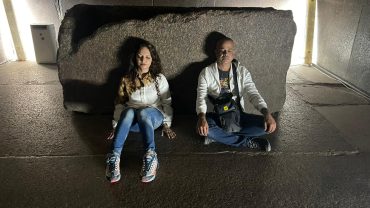The Nilometer at Roda Island stands as a testament to the ancient ingenuity of Egyptian engineers and their profound connection to the Nile River. This remarkable structure, dating back to the Pharaonic era, played a crucial role in assessing the annual flooding of the Nile, which was not only a natural event but a lifeline for the people of ancient Egypt. The word “Nilometer” itself carries the essence of its purpose, reflecting its function as a measurement device for the Nile’s water levels. This article delves into the history, significance, and architectural marvel of the Nilometer at Roda Island.
Historical Significance
The Nilometer at Roda Island is one of the few surviving examples of an ancient measuring device dedicated to monitoring the Nile’s fluctuations. Constructed during the early Islamic period, around the 9th century, it stands on the southern tip of Roda Island in the Nile Delta. However, its origins trace back even further to the Pharaonic period, with the first Nilometer believed to have been built during the reign of the Old Kingdom Pharaohs.
The annual flooding of the Nile was a pivotal event for ancient Egyptians, as it brought nutrient-rich silt that fertilized the land, ensuring a bountiful harvest. The Nilometer served as a tool to predict the success of the harvest by measuring the water levels. The information gathered was not only vital for agricultural planning but also for determining taxes and ensuring the prosperity of the kingdom. Over the centuries, the Nilometer underwent several renovations, each reflecting the architectural styles of the ruling dynasties.
Architectural Marvel
The architectural design of the Nilometer at Roda Island reflects a fusion of ancient Egyptian and Islamic styles. The structure consists of a well-like shaft connected to the Nile by a canal. Graduated markings along the walls of the well allowed observers to note the water level accurately. The precision in measurement was achieved by dividing the well into cubits, an ancient unit of measurement.
The beauty of the Nilometer lies not only in its functionality but also in its aesthetic appeal. Elaborate columns, arches, and decorative elements adorn the structure, showcasing the craftsmanship of the builders. The blending of Pharaonic motifs with Islamic architectural elements creates a unique visual experience. It stands as a silent witness to the continuity of culture and knowledge through the ages, embodying the spirit of innovation that characterizes ancient Egyptian engineering.
Modern Significance and Preservation
While the Nilometer at Roda Island no longer serves its original purpose due to modern advancements in technology, its historical and cultural significance remains invaluable. In recognition of its importance, the site has been designated as a protected monument by the Egyptian government. Preservation efforts aim not only to safeguard the physical structure but also to promote awareness of Egypt’s rich cultural heritage.
Visitors to the Nilometer at Roda Island can marvel at the intersection of ancient wisdom and architectural brilliance. The site provides a tangible link to the past, allowing us to appreciate the symbiotic relationship between the Nile and the prosperity of one of the world’s greatest civilizations. As we explore the intricacies of this historical marvel, we are reminded of the enduring legacy of the Nile and the timeless ingenuity of those who harnessed its power for the benefit of society. The Nilometer at Roda Island stands as a beacon, guiding us through the currents of time and connecting us to the roots of human civilization.
The Nilometer’s Influence on Culture and Religion
Beyond its practical applications, the Nilometer at Roda Island has also left an indelible mark on Egyptian culture and religious beliefs. The annual inundation of the Nile was not just a natural phenomenon but a divine blessing. The Nilometer, as a tool to measure and predict these floods, became intricately woven into the religious fabric of ancient Egypt. The rising waters were seen as a manifestation of the gods’ benevolence, ensuring fertility and abundance for the land.
Inscriptions and reliefs found near Nilometers often depict religious ceremonies and offerings made to honor the deities associated with the Nile. This intertwining of scientific observation and spiritual reverence showcases the holistic worldview of ancient Egyptians. The Nile, as both a life-giving force and a divine entity, held a central place in their understanding of the world.
Challenges and Restoration Efforts
Despite its enduring resilience, the Nilometer at Roda Island has faced challenges over the centuries. Natural elements, pollution, and the passage of time have taken their toll on this ancient structure. Preservation efforts have become crucial to ensure that this historical gem continues to stand for future generations.
Conservationists and archaeologists have worked tirelessly to restore and maintain the Nilometer, employing advanced techniques to protect its structural integrity. The delicate balance between preserving the authenticity of the original construction and implementing necessary repairs requires a meticulous approach. The collaborative efforts of local and international organizations highlight the global significance placed on safeguarding humanity’s shared heritage.




Comment (0)